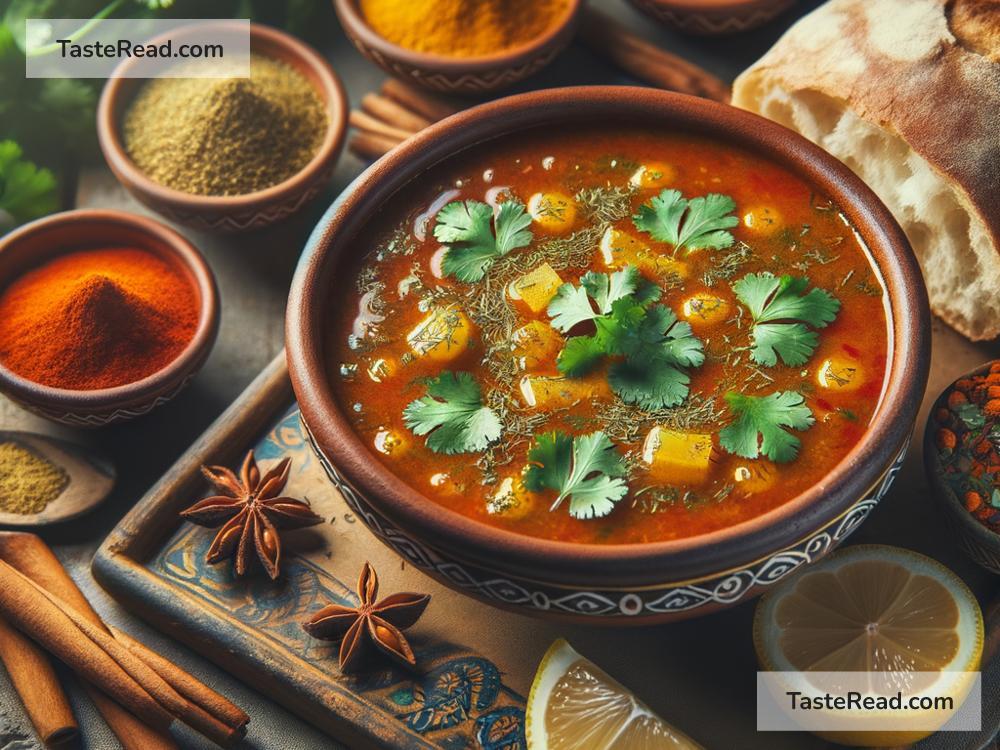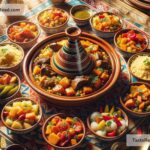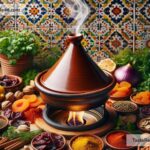The Cultural Significance of the Moroccan Harira: A Dish That Brings People Together
Morocco is a country bursting with vibrant colors, rich traditions, and delicious food. Among the many dishes enjoyed by locals and visitors alike, one stands out as a symbol of Moroccan culture: harira. This hearty soup is more than just a meal—it is a bridge to tradition, community, and family. From its role in religious practices to its comforting presence in everyday life, harira holds a special place in Moroccan hearts and kitchens.
What Is Harira?
Harira is a delicious Moroccan soup, often made with tomatoes, lentils, chickpeas, onions, and fresh herbs like cilantro and parsley. It is typically seasoned with warm spices such as turmeric, cinnamon, ginger, and black pepper, giving it a rich and flavorful taste. Some recipes include meat, like lamb or beef, while others are entirely vegetarian. Noodles or rice may be added for extra texture, and it is usually topped with a squeeze of fresh lemon and a sprinkle of herbs before serving.
What makes harira unique is its balance of nutrients and flavors. It’s filling, fragrant, and versatile, making it perfect for meals shared with family or friends. But harira isn’t just about good taste; it’s a dish with deep cultural significance.
A Ramadan Tradition
One of the most important times for harira in Moroccan culture is during Ramadan, the holy month of fasting in Islam. During Ramadan, Muslims fast from sunrise to sunset. After a long day without food or drink, families gather to break their fast at sunset with a meal called “iftar.” Harira is often the star of the iftar table.
Why is harira so popular during Ramadan? First, it is nourishing and refreshing after a full day of fasting. The soup is packed with protein, fiber, and healthy carbohydrates, providing much-needed energy. The rich spices and comforting warmth make it ideal for a post-fast meal. It is often served with dates, hard-boiled eggs, and chebakia (a sweet sesame pastry) to create a flavorful and satisfying iftar spread.
Beyond its nutritional benefits, harira also carries a sense of tradition during Ramadan. Many families follow recipes passed down through generations, giving the dish a personal and historical touch. Cooking and eating harira is a reminder of faith, family bonds, and the joy of sharing meals with loved ones.
A Symbol of Community
In Moroccan culture, food is a way of bringing people together, and harira plays a big role in this. The soup is often prepared in large batches, making it an ideal dish for sharing. Whether it’s served at home during Ramadan, at weddings, or simply to welcome guests, harira symbolizes hospitality and generosity.
One charming Moroccan custom is the gesture of offering harira to neighbors or visitors, especially during Ramadan. It’s a way of extending goodwill and building connections within the community. Even in busy cities, the act of sharing food helps create a sense of warmth and unity.
Street vendors also play a part in the communal nature of harira. In Morocco’s bustling medinas (marketplaces), vendors often sell steaming bowls of harira to customers looking for an affordable, filling meal. Sitting at a food stall and enjoying a bowl of soup alongside strangers makes harira more than a dish; it becomes an experience that embodies Moroccan hospitality and friendliness.
A Link to Moroccan Identity
Harira is not just food—it’s culture. For many Moroccans, the dish is deeply tied to their sense of identity. It reflects the country’s diverse culinary influences, blending Berber, Arab, and Andalusian traditions. The combination of local ingredients, rich spices, and careful preparation showcases the pride Moroccans have in their food heritage.
Moreover, harira represents the values of balance and harmony, which are central to Moroccan cooking. The soup’s layers of flavor and nutrition demonstrate how Moroccan cuisine strives to nourish both the body and the soul. Eating harira reminds Moroccans of their cultural roots and traditions while offering comfort and joy.
A Dish That Tells a Story
Every bowl of harira tells a story. It might be the story of a grandmother who taught her children how to cook the soup with love and care. It could be the story of a traveler who shared harira with locals and discovered the warmth of Moroccan hospitality. Or it could be the story of a community coming together to celebrate a holiday or special occasion.
Harira is more than the sum of its ingredients. It is a dish filled with history, connection, and meaning. Whether it’s eaten at home, shared with friends, or enjoyed in the bustling streets of Marrakech or Fez, harira continues to bring people together and represent the heart of Moroccan culture.
Conclusion
The cultural significance of Moroccan harira goes far beyond its delicious taste. It is a dish that unites families during Ramadan and builds bonds within communities. It is a symbol of hospitality, heritage, and tradition—and a reminder of the importance of sharing food and moments with others.
Harira’s warm and flavorful embrace reflects the spirit of Morocco itself, a country where food is not just sustenance, but a way to celebrate life and connection. So, if you ever find yourself in Morocco, don’t miss the chance to try this iconic soup and experience the love and culture it represents.


